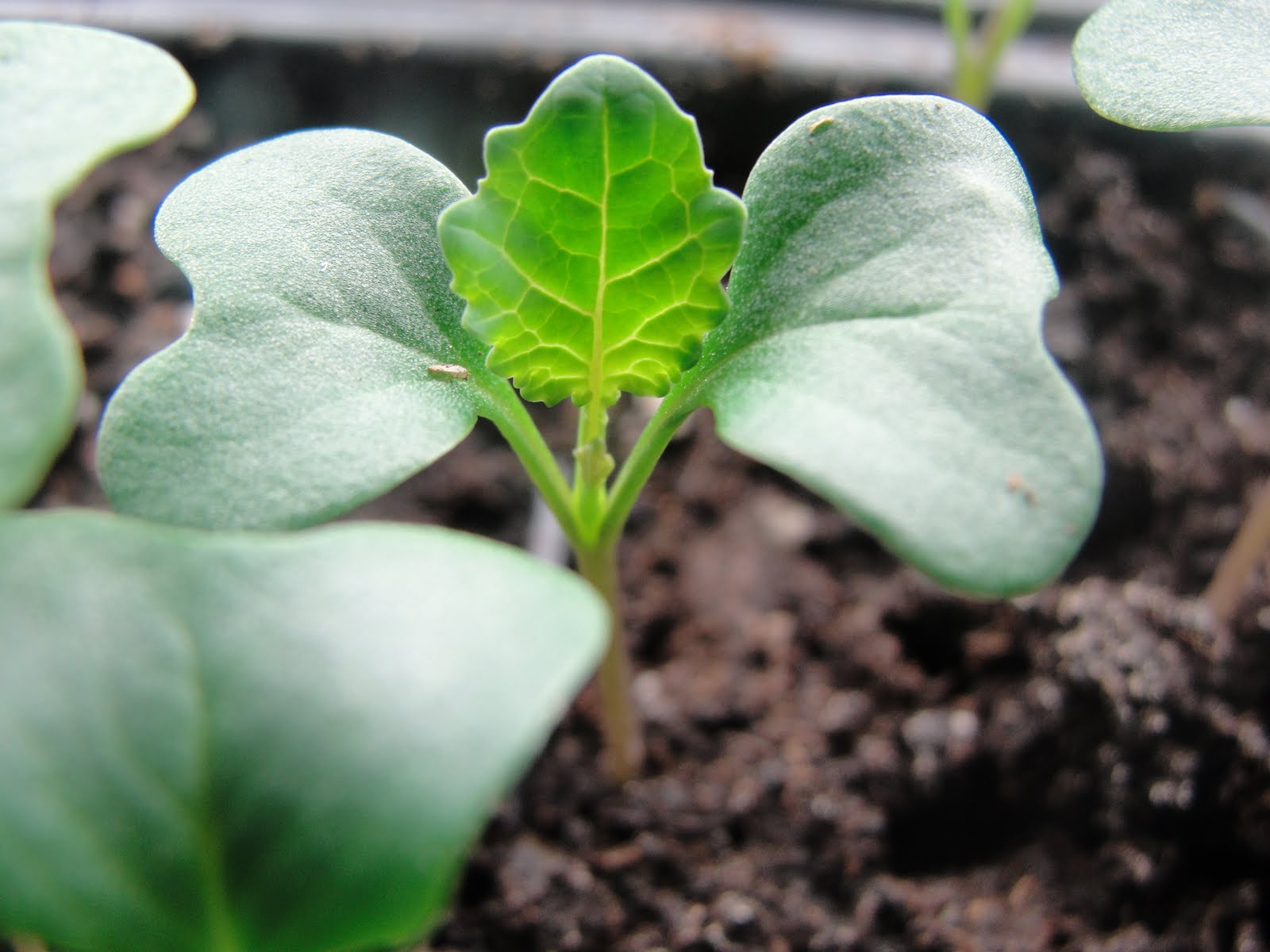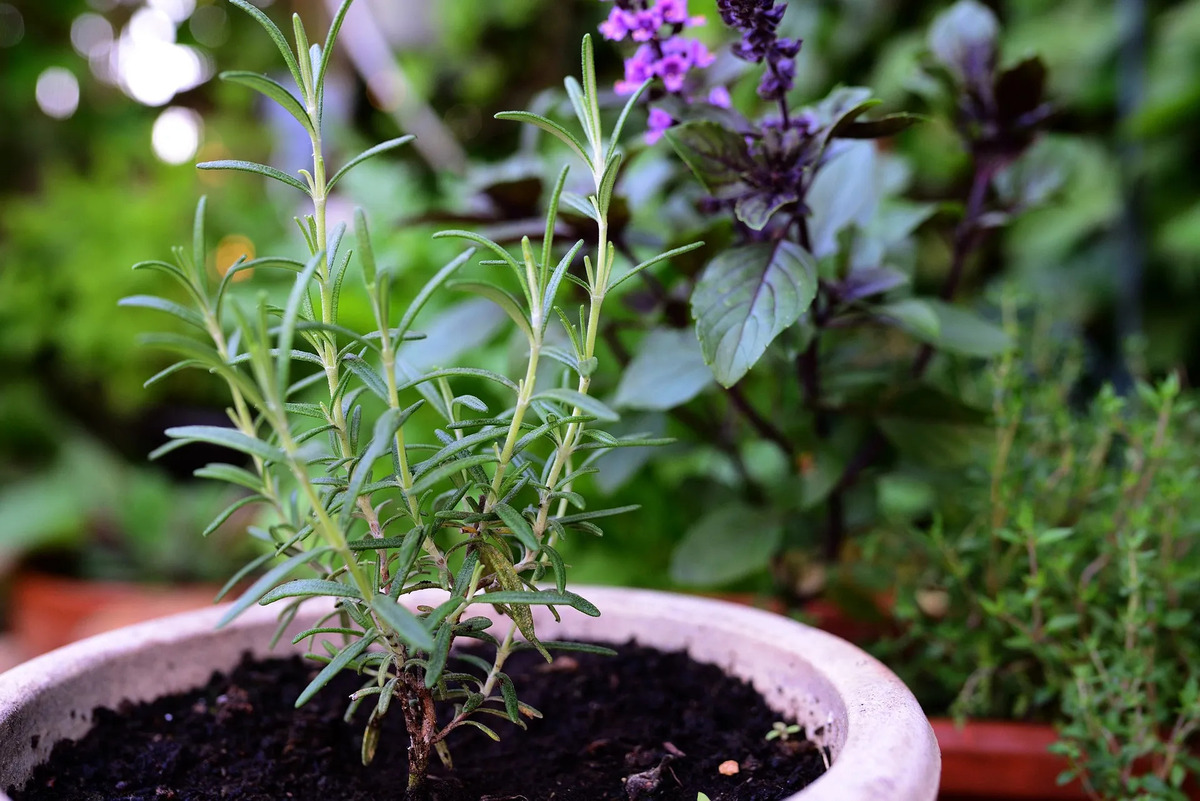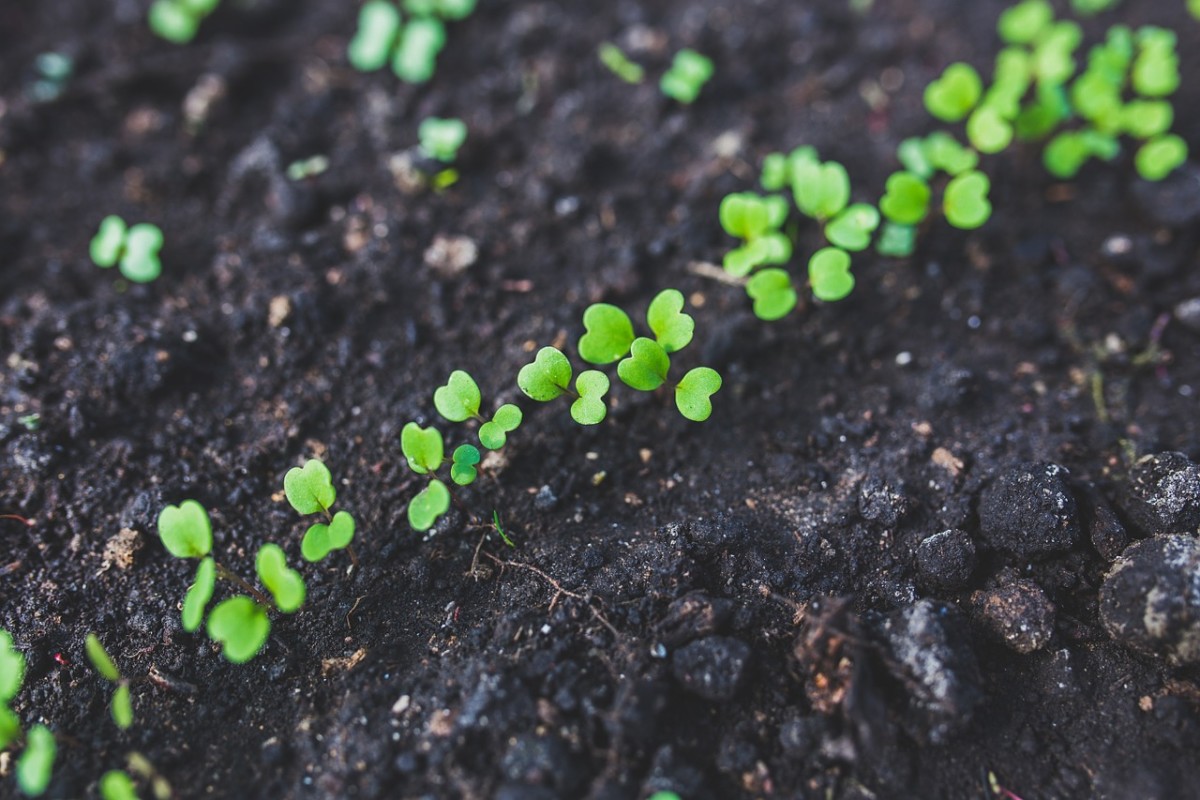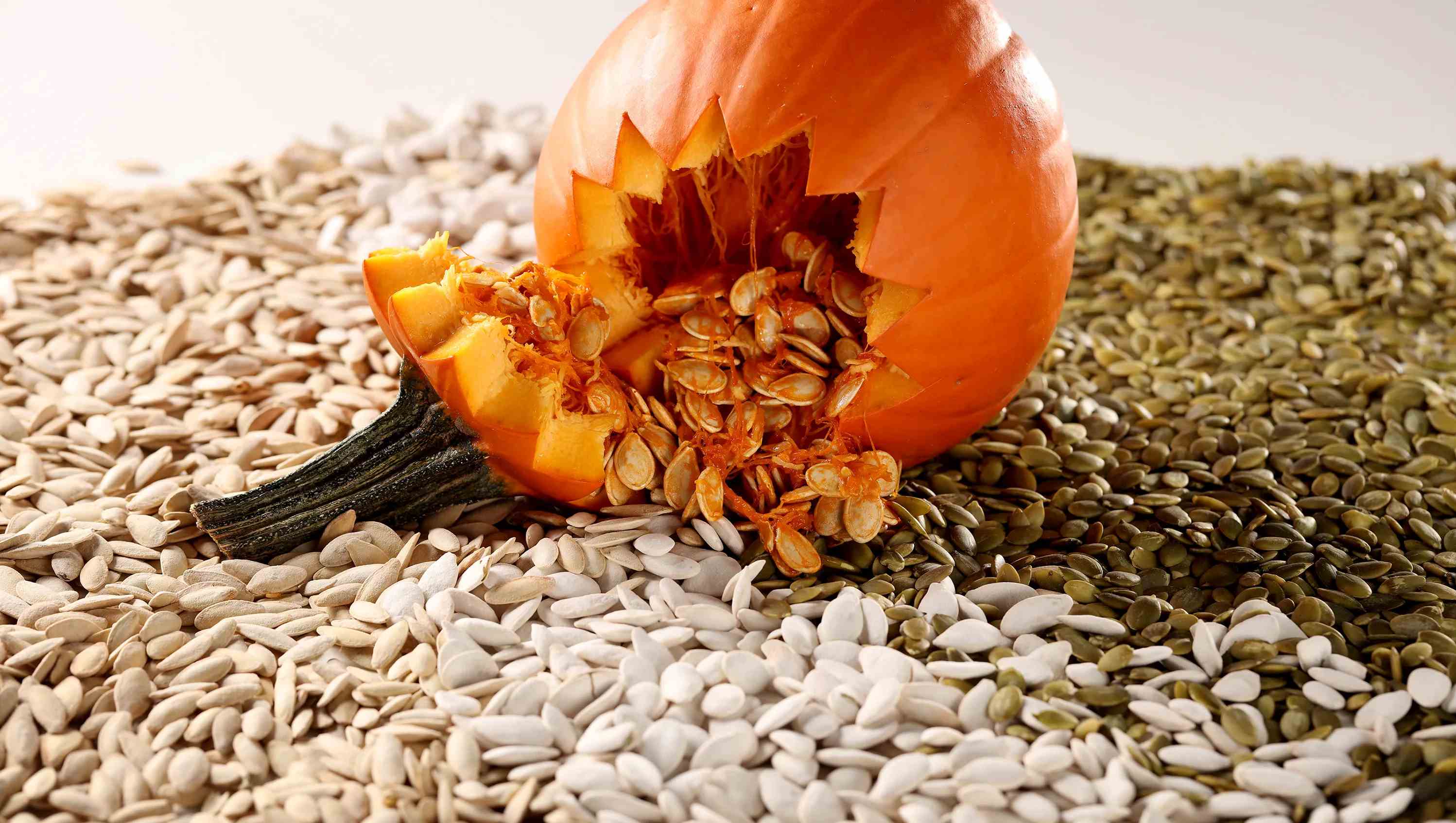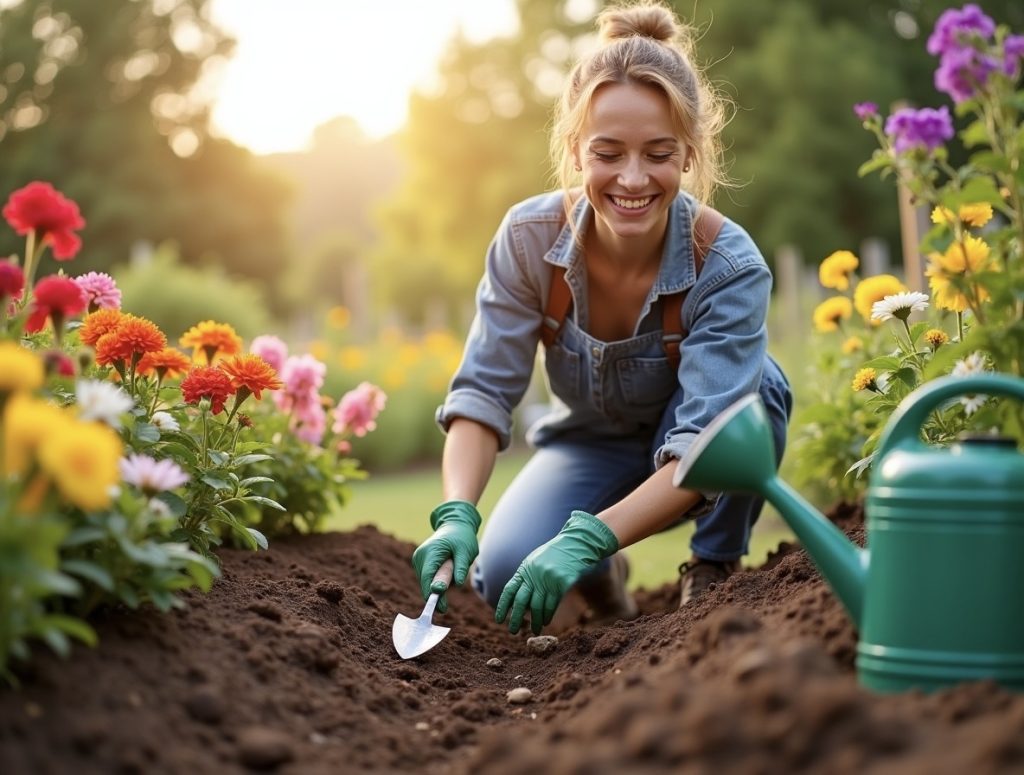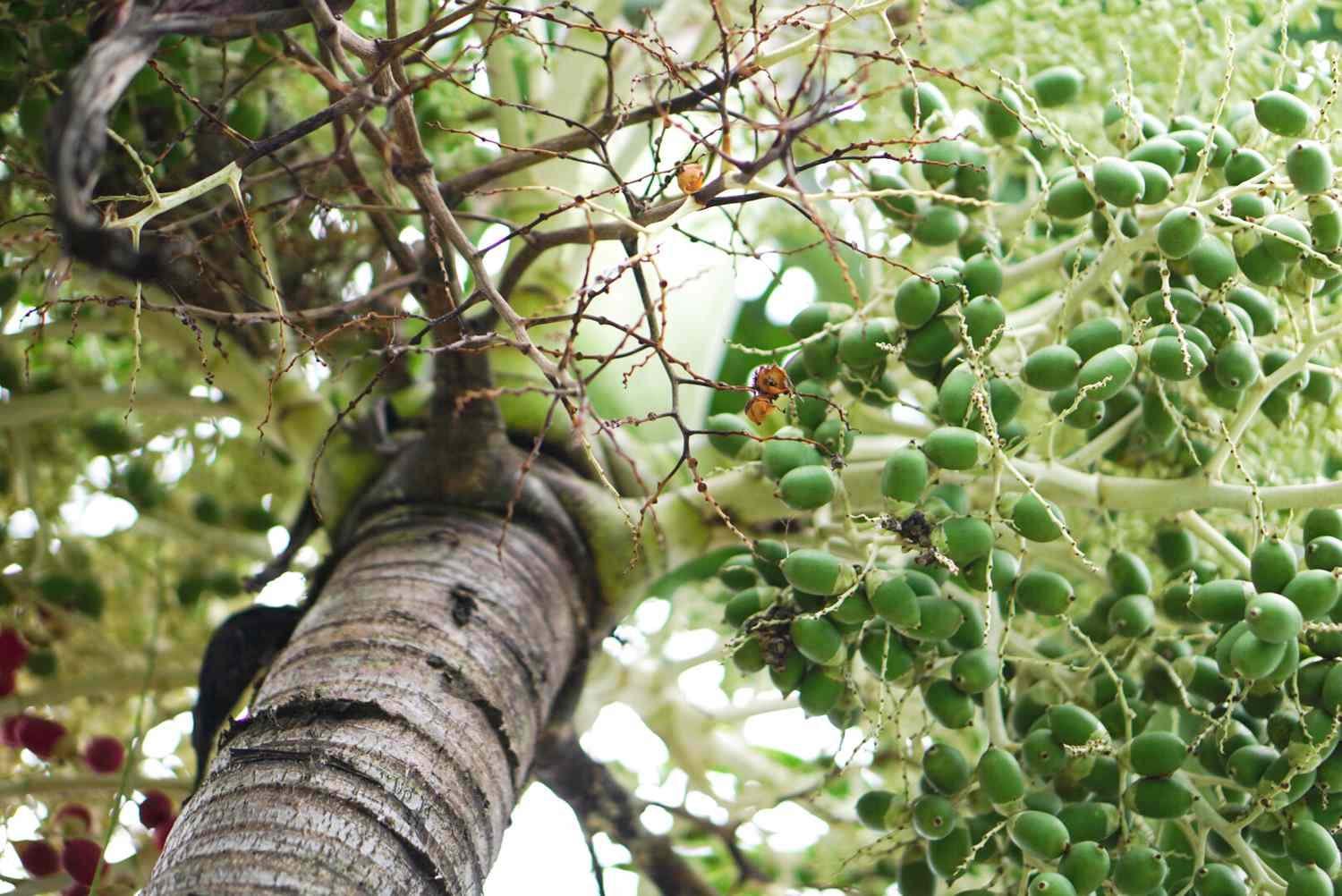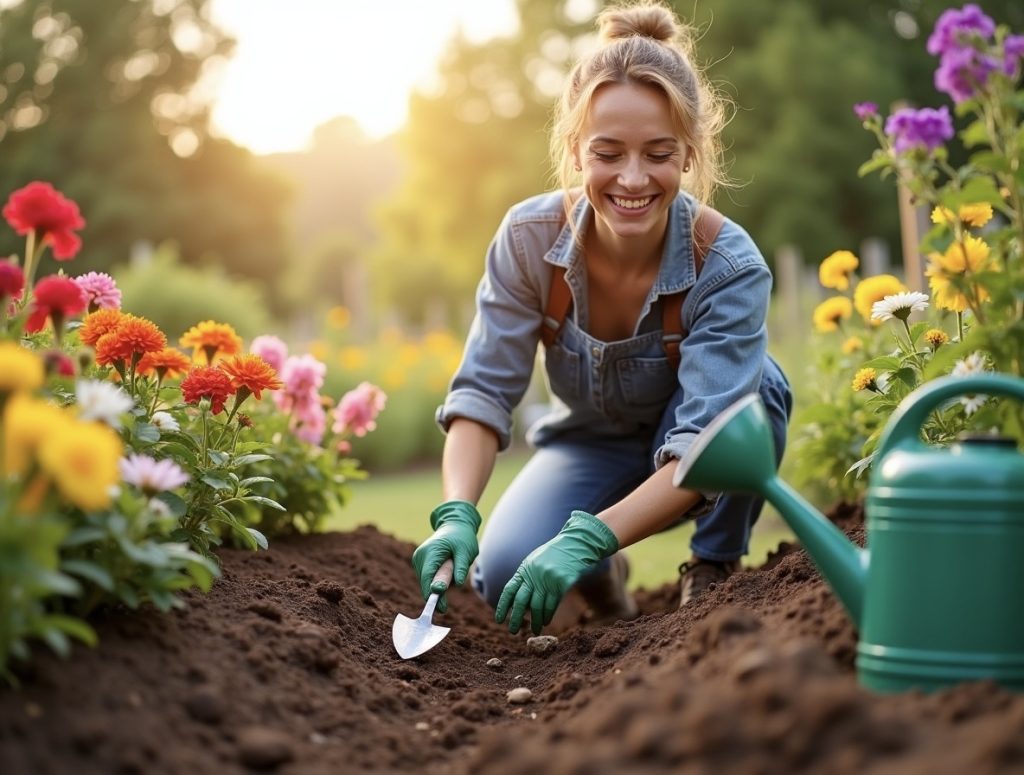Home>Types of Gardening>Edible Gardening>How To Grow Radish Seeds


Edible Gardening
How To Grow Radish Seeds
Modified: January 22, 2024
Learn how to grow radish seeds with our comprehensive guide on edible gardening. Start your own successful radish garden today!
(Many of the links in this article redirect to a specific reviewed product. Your purchase of these products through affiliate links helps to generate commission for Chicagolandgardening.com, at no extra cost. Learn more)
Table of Contents
Introduction
Welcome to the fascinating world of edible gardening! There’s something incredibly rewarding about growing your own food, and one of the easiest and fastest-growing vegetables to start with is radishes. Whether you have a spacious backyard or just a small balcony, radishes can thrive in any container or garden bed, making them a perfect choice for gardeners of all levels.
Radishes are not only delicious, crunchy, and versatile, but they are also packed with essential nutrients, including vitamin C, potassium, and fiber. These vibrant root vegetables are known for their quick growth, sometimes ready to harvest in as little as three weeks from seed. So, if you’re looking for a satisfying and rewarding gardening experience, growing radishes should be at the top of your list.
In this comprehensive guide, we’ll walk you through everything you need to know to successfully grow radish seeds. From selecting the right variety and preparing the soil to caring for the growing plants and finally harvesting and storing your radishes, we’ve got you covered.
So, get ready to dig into the world of edible gardening and discover the joy and satisfaction of growing your own radishes. Let’s dive in and see how you can start growing this delightful and nutritious vegetable right in your own backyard or balcony garden.
Choosing the Right Radish Seeds
When it comes to choosing radish seeds, there are various factors to consider. Different varieties of radishes offer different flavors, sizes, and colors, so you have the opportunity to experiment and find the perfect radish for your taste buds. Here are some key considerations when selecting radish seeds:
- Variety: Radishes come in a wide range of varieties, including round, elongated, and daikon. Some popular varieties to consider include Cherry Belle, French Breakfast, and Watermelon. Research the characteristics of each variety to determine which one suits your preferences and gardening conditions.
- Growing Time: Radishes are known for their quick growth, but different varieties have varying maturity dates. If you’re looking for a fast harvest, choose early-maturing varieties that can be ready in as little as 20 days. However, if you prefer larger radishes, consider medium to late-maturing varieties that take around 30-60 days.
- Climate Adaptability: Consider the climate in your region and choose radish varieties that are well-suited to those conditions. Some varieties are more heat-tolerant, while others thrive in cooler temperatures. Selecting the right radish variety for your climate will ensure better germination and overall success.
- Flavor and Texture: Radishes offer a range of flavors, from mild and sweet to peppery and spicy. Additionally, textures can vary from crisp and crunchy to tender and juicy. Consider your personal preferences when it comes to flavor and texture to choose a radish variety that will be enjoyable to eat.
- Seed Quality: It’s crucial to select high-quality radish seeds to give your plants the best chance of success. Look for reputable seed suppliers or nurseries that provide fresh, viable seeds. Avoid purchasing seeds that are discolored, damaged, or past their expiration date.
By carefully considering these factors, you can choose the perfect radish seeds for your edible garden. Remember, there is no one-size-fits-all approach, so don’t be afraid to try different varieties and experiment to find your favorite radish.
Preparing the Soil
Before you plant your radish seeds, it’s important to prepare the soil properly. Radishes thrive in well-draining soil that is rich in organic matter. Here’s a step-by-step guide on how to prepare the soil for your radish garden:
- Choose the Right Location: Select a spot in your garden or balcony that receives at least 6-8 hours of direct sunlight daily. Radishes prefer full sun but can tolerate some shade, especially in hotter climates.
- Remove Weeds: Clear the area of any weeds or grass. Radishes don’t compete well with other plants for nutrients and space, so it’s important to eliminate any potential competition.
- Loosen the Soil: Use a garden fork or a tiller to loosen the soil to a depth of about 8-10 inches. This will improve aeration and drainage, allowing the radish roots to grow freely.
- Amend the Soil: Radishes prefer slightly acidic soil with a pH level between 6.0 and 7.0. Test the soil pH and if necessary, amend it by adding organic matter such as compost, well-rotted manure, or peat moss. Mix the amendments into the soil evenly.
- Ensure Good Drainage: Radishes don’t like soggy soil, so ensure proper drainage by incorporating coarse sand or perlite into the soil. This will help prevent waterlogged conditions and reduce the risk of root rot.
- Rake and Level the Soil: Use a rake to smooth out the soil surface and remove any large clumps or rocks. Leveling the soil will provide an even surface for planting and allow the radishes to grow uniformly.
By following these steps, you’ll create an optimal growing environment for your radishes. Preparing the soil properly will ensure that your radish seeds have the best possible chance of germinating and developing into healthy plants. Take your time during this preparation process to set the foundation for a successful radish garden.
Planting the Radish Seeds
Now that you have prepared the soil, it’s time to plant your radish seeds. Follow these guidelines to ensure proper planting and optimal germination:
- Timing: Radishes are cool-season crops, so it’s best to plant them in early spring or fall when temperatures are mild. Avoid planting during the hot summer months as radishes tend to bolt and become pungent.
- Spacing: Radishes don’t require a lot of space, but they still need some room to grow. Plant the seeds about 1 inch apart in rows that are 12-18 inches apart. If you’re planting in containers, provide at least 2-3 inches of space between each seed.
- Planting Depth: Radish seeds should be planted about ½ to 1 inch deep in the soil. Make a small indentation or furrow in the soil using your finger or a small garden tool. Drop one or two seeds into each hole and cover them gently with soil.
- Watering: After planting, water the soil thoroughly to ensure proper seed hydration. Keep the soil consistently moist, but be careful not to overwater, as this can lead to rotting of the seeds or problems with root development.
- Thinning: Once the radish seedlings emerge and grow a few inches tall, thin them out to ensure proper spacing. Thin the plants to about 2-3 inches apart, carefully removing the weaker or crowded seedlings. This will allow the remaining plants to develop healthy roots and bulbs.
- Successive Planting: For a continuous harvest, consider planting radish seeds in succession every 7-10 days. This way, you’ll have a steady supply of radishes throughout the growing season rather than a single large harvest.
Remember to keep an eye on the weather conditions and provide appropriate protection if unexpected frosts occur. Once the radish seeds are planted and germinate, they should start growing rapidly. With proper care and attention, you’ll soon see the beautiful leaves and vibrant radish bulbs forming.
Providing Proper Watering and Sunlight
Proper watering and sunlight are crucial for the healthy growth of your radish plants. Here’s how you can ensure your radishes receive the right amount of water and sunlight:
Watering:
- Consistent Moisture: Radishes prefer consistently moist soil, but not waterlogged conditions. Water your radish plants regularly, aiming to keep the soil evenly moist. Check the soil moisture level by inserting your finger about an inch into the soil. If it feels dry, it’s time to water.
- Deep Watering: When you water, make sure to provide enough water to reach the depth of the radish roots. Shallow watering can lead to shallow root growth and underdeveloped bulbs. Water deeply, allowing the water to penetrate the soil at least 6-8 inches.
- Avoid Overwatering: While it’s important to keep the soil consistently moist, be cautious of overwatering. Excessive moisture can cause the radish roots to rot and can promote the growth of fungal diseases. Make sure the soil has adequate drainage to prevent waterlogging.
- Mulching: Applying a layer of organic mulch around the radish plants can help conserve soil moisture and reduce weed growth. Mulching also provides insulation, keeping the soil temperature consistent and preventing evaporation.
Sunlight:
- Full Sun: Radishes thrive in full sunlight, receiving at least 6-8 hours of direct sunlight per day. Ensure your radish garden is located in an area that isn’t shaded by trees or other structures.
- Some Shade Tolerance: While radishes prefer full sun, they can tolerate some shade, especially in warmer climates. If you live in an area with intense heat, providing some afternoon shade can help prevent the plants from bolting prematurely.
- Rotate for Even Sun Exposure: If you’re growing radishes in containers or limited space, consider rotating the pots or relocating them periodically. This will ensure even exposure to sunlight and promote balanced growth.
By providing the right amount of water and sunlight, you’ll create optimal growing conditions for your radishes. Consistent moisture and adequate sunlight will result in healthy, flavorful radish bulbs that are ready for harvest in no time.
Taking Care of the Growing Radish Plants
Once your radish plants have sprouted and are growing steadily, it’s important to provide proper care to ensure their continued health and development. Here are some essential tips for taking care of your growing radish plants:
- Thinning: If you haven’t already done so during the planting stage, thin the radish seedlings to provide adequate space for each plant to grow. Proper spacing ensures better airflow and reduces the risk of disease.
- Weed Control: Keep the radish bed free of weeds, as they can compete with your radish plants for nutrients and space. Regularly remove any weed growth to prevent them from taking over.
- Fertilization: Radishes are relatively light feeders, but adding a balanced organic fertilizer can help promote healthy growth. Apply a thin layer of compost or a gentle organic fertilizer once the radish plants reach a few inches in height.
- Pest Management: Monitor your radish plants for any signs of pests like aphids, flea beetles, or cabbage worms. If pests become problematic, try using organic pest control methods or natural remedies to prevent damage.
- Disease Prevention: Radishes are generally resistant to many diseases, but some common issues can still arise. To prevent diseases, practice crop rotation, ensure good airflow around the plants, and avoid overhead watering to minimize foliage wetness.
- Regular Watering: Maintain consistent moisture in the soil by watering your radish plants regularly. Check the soil moisture frequently, especially during hot and dry periods, and adjust the watering schedule accordingly.
- Monitor for Bolting: Radishes are cool-season crops, and excessive heat can cause them to bolt, i.e., flower and produce seeds prematurely. Keep an eye on the temperature and provide shade or extra water during heatwaves to prevent bolting.
- Harvesting: Radishes are typically ready to harvest in 20-60 days, depending on the variety. Keep track of the days to maturity and start checking the size and firmness of the radish bulbs. Harvest them when they reach the desired size, as leaving them too long can lead to pithiness or a fibrous texture.
- Enjoy and Repeat: Once you have harvested your radishes, savor their crisp texture and peppery flavor in salads, sandwiches, stir-fries, or simply as a snack. If you want a continuous supply, repeat the planting process every few weeks for a steady harvest throughout the growing season.
By following these care guidelines, you’ll provide your radish plants with the best conditions for growth and minimize the risk of pests, diseases, and other issues. Taking care of your growing radish plants will ensure a bountiful and satisfying harvest.
Harvesting the Radish
Harvesting radishes is an exciting moment for any gardener. With their rapid growth, you’ll soon be enjoying the fruits (or rather, vegetables) of your labor. Here’s what you need to know about harvesting radishes:
- Timing: Radishes are typically ready to harvest within 20-60 days, depending on the variety. Pay attention to the days to maturity specified for the particular variety you planted and start checking for readiness as you approach that timeframe.
- Size and Firmness: Radishes are typically harvested when they reach a desirable size, usually around 1-2 inches in diameter. Gently pull up one radish to check if it is firm and has reached the desired size. If it feels solid and firm, it’s time to harvest the rest.
- Root Appearance: Look for radishes with smooth skin and a colorful appearance, depending on the variety planted. Avoid harvesting radishes that have started to crack or split, as this indicates overripe or past their prime.
- Harvesting Technique: To harvest radishes, gently grasp the foliage close to the soil line and pull upwards. The radish should easily come out of the ground along with its root. If the leaves are resistant to pulling, you can use a small trowel or garden fork to loosen the soil gently around the radish before lifting it out.
- Don’t Delay: Unlike some other vegetables, radishes don’t store well in the ground once they have matured. Harvest them as soon as they are ready, as leaving them in the ground for too long may result in pithiness, loss of flavor, or the development of a woody and fibrous texture.
- Enjoy Fresh: After harvesting, rinse the radishes thoroughly to remove any dirt and debris. Trim off the leaves, leaving about an inch of stem attached if desired. Radishes are best enjoyed fresh, so use them in salads, as a crunchy topping for sandwiches, or simply as a flavorful snack.
Remember that radishes can be harvested successively by planting new seeds every few weeks. This allows for a continuous harvest throughout the growing season, ensuring a steady supply of fresh and crisp radishes for your enjoyment.
Storing and Using Radishes
Once you have harvested your radishes, you may have an abundance of these flavorful root vegetables. Here are some tips on storing and using radishes to make the most of your harvest:
- Storage: Remove the greens from the radishes, as they draw moisture from the bulbs and can cause them to become soft. Store radishes in the refrigerator, preferably in a breathable bag or container to maintain their crispness. Stored properly, radishes can last for up to a week.
- Salads and Slaws: Radishes add a refreshing crunch and subtle heat to salads and slaws. Thinly slice or shred them and toss them with greens, tomatoes, cucumbers, and your favorite dressings for a vibrant and flavorful salad.
- Pickles and Fermentations: Radishes can be pickled or fermented to extend their shelf life and add a tangy twist. Quick pickling radishes in vinegar, salt, and sugar solution can create a delightful accompaniment to sandwiches and tacos.
- Roasting and Sautéing: Radishes can develop a milder, sweeter flavor when roasted or sautéed. Toss radish halves or slices with olive oil, salt, and pepper, then roast them in the oven until they become tender. Sautéing in butter or oil can also bring out their natural sweetness.
- Radish Greens: Don’t discard the radish greens when you harvest the bulbs. They are edible and can be used in various ways. Add chopped radish greens to salads, stir-fries, or soups for an extra boost of nutrients and flavor.
- Radish Top Pesto: Radish greens can be used to make a flavorful and vibrant pesto. Blend the greens with garlic, nuts, Parmesan cheese, olive oil, and lemon juice to create a versatile sauce for pasta, grilled meats, or as a spread on toast.
- Cooking with Diverse Cuisines: Radishes are versatile and can be used in a variety of cuisines. Experiment with incorporating them into Mexican tacos, Asian stir-fries, Indian curries, or French salads to discover new flavors and combinations.
Remember that radishes are best enjoyed when they are fresh and crisp, so try to use them in your recipes as soon as possible after harvesting. By storing them properly and exploring various culinary possibilities, you can make the most of your radish harvest and savor the unique flavors and textures they offer.
Troubleshooting Common Radish Growing Problems
While radishes are generally easy to grow, they may encounter some common issues along the way. Here are some troubleshooting tips to help you address and prevent common radish growing problems:
- Poor Germination: If your radish seeds fail to germinate, it may be due to overly compacted soil or improper planting depth. Ensure that the soil is loose and well-draining before planting, and plant the seeds at the recommended depth indicated on the seed packet.
- Floppy or Leggy Seedlings: Weak and floppy radish seedlings are usually a result of insufficient sunlight. Make sure your radish plants receive at least 6-8 hours of direct sunlight per day. If they are growing in a shaded area, consider relocating them to a sunnier spot.
- Poor Root Formation: If your radish bulbs are small or misshapen, it may indicate irregular watering or overcrowding. Ensure consistent soil moisture, providing enough water without overwatering. Thin out the seedlings to ensure each plant has enough space to develop a healthy root system.
- Cracking or Splitting: Radishes can crack or split when they experience fluctuations in moisture levels. This often happens when the soil dries out and is then heavily watered afterward. To prevent cracking, maintain consistent soil moisture by watering regularly and evenly throughout the growing season.
- Pests: Radishes can be susceptible to pests such as flea beetles, aphids, and cabbage worms. Monitor your plants regularly and take appropriate action if you notice any pest infestation. Natural remedies like neem oil, insecticidal soap, or introducing beneficial insects can help control pests without the use of harmful chemicals.
- Diseases: While radishes are generally disease-resistant, they can occasionally be affected by fungal and bacterial diseases such as damping-off, downy mildew, or black rot. To prevent diseases, practice crop rotation, avoid overwatering, provide adequate airflow, and promptly remove and discard any infected plants.
- Bolting: Exposure to high temperatures can cause radishes to bolt, meaning they prematurely produce flowers and seeds instead of developing bulbs. To prevent bolting, provide shade during the hottest parts of the day or consider planting radishes in the cooler seasons of spring and fall.
- Poor Flavor: If your radishes turn out to be overly spicy or pungent, it is likely due to insufficient water or allowing them to grow for too long. Keep the soil consistently moist and harvest the radishes when they reach the desired size to maintain a milder flavor.
By identifying and addressing these common radish growing problems, you can improve the overall health and productivity of your radish plants. Pay attention to the needs of your radishes, practice proper care, and consistently monitor for any issues to ensure a successful and rewarding radish-growing experience.
Conclusion
Congratulations! You have now become a radish-growing expert. By following the steps outlined in this guide, you can successfully grow your own radishes and enjoy their flavorful and crunchy goodness. From choosing the right seeds and preparing the soil to providing proper care, watering, and sunlight, you have learned the essential aspects of nurturing radish plants.
Remember to select radish varieties that suit your preferences, and consider factors such as growing time, climate adaptability, and flavor. Prepare the soil diligently, ensuring proper drainage and nutrient content. When planting the radish seeds, maintain proper spacing and provide sufficient moisture for germination.
Throughout the growth process, take care of your radish plants by thinning them, controlling weeds, preventing pests and diseases, and ensuring consistent watering and sunlight. Harvest your radishes at the right time, enjoying their vibrant colors and crisp textures. Experiment with various culinary uses, from salads to stir-fries, pickles, and pestos.
Should you encounter any challenges, refer back to the troubleshooting section for helpful tips in addressing common radish growing problems. With practice and experience, you’ll become adept at growing radishes and even explore new techniques and varieties.
Gardening is not just about the end result, but also about the joy and satisfaction that comes from nurturing living things and witnessing their growth. Growing radishes allows you to connect with nature, appreciate the rewards of your labor, and savor the flavors of homegrown produce.
So, what are you waiting for? Start your radish-growing journey today and experience the delight of harvesting your own fresh and flavorful radishes. Enjoy the process, learn from your successes and challenges, and let the world of edible gardening continue to inspire and enrich your life.
